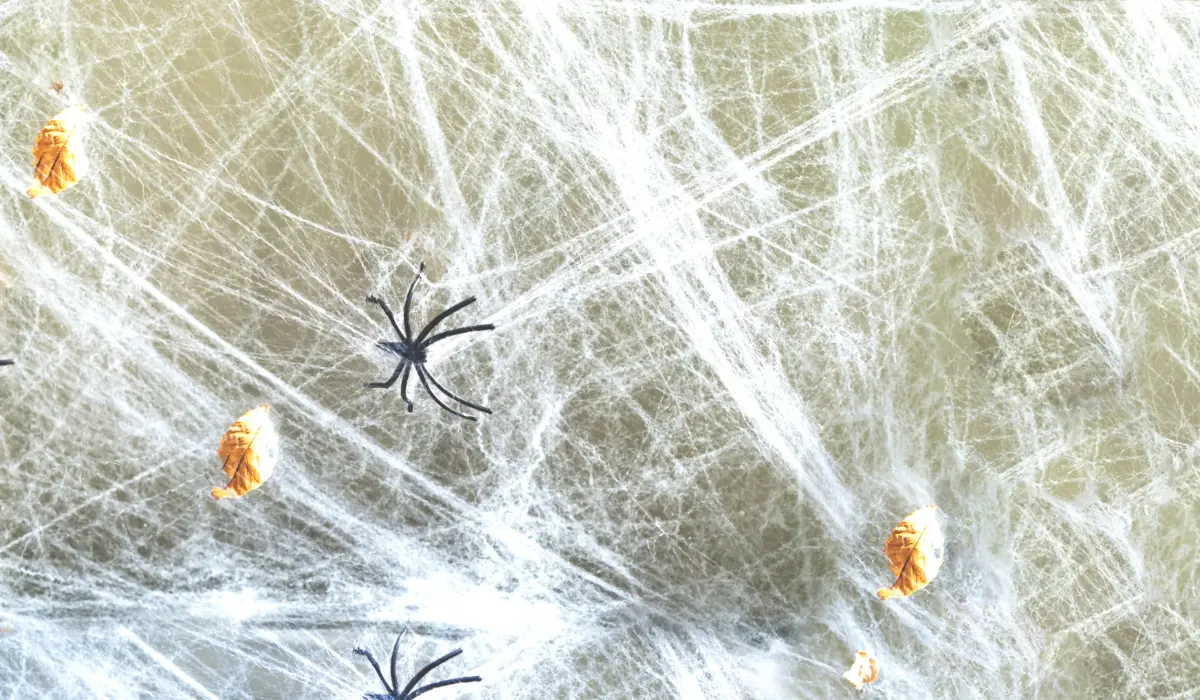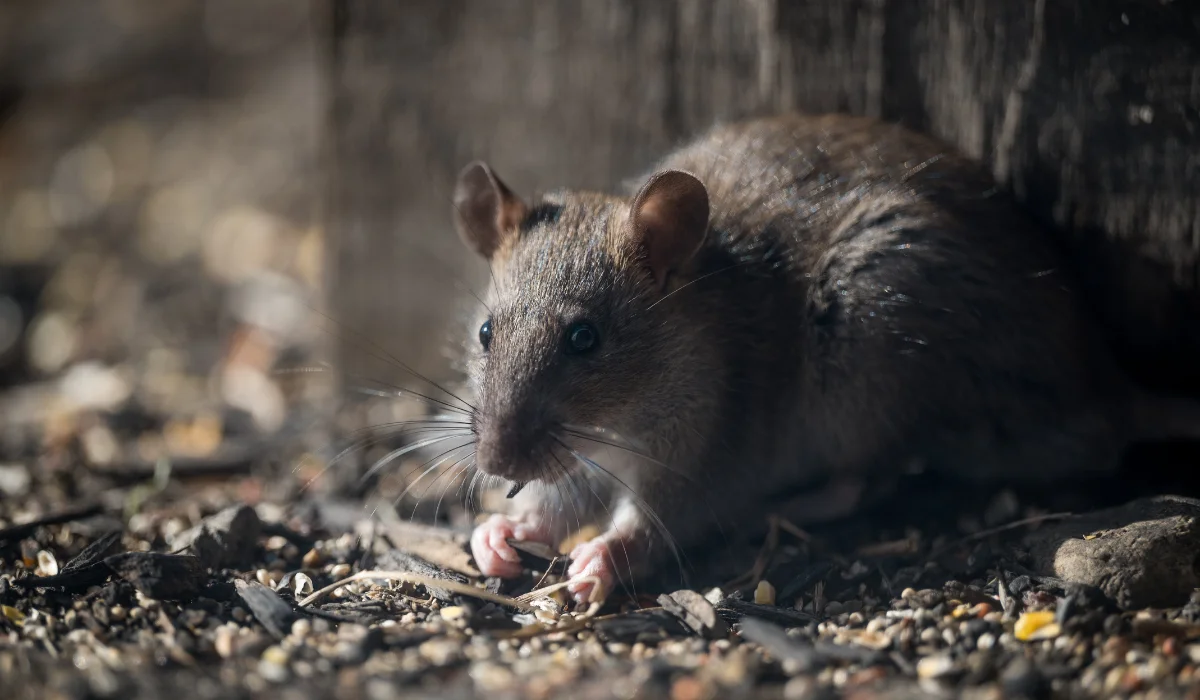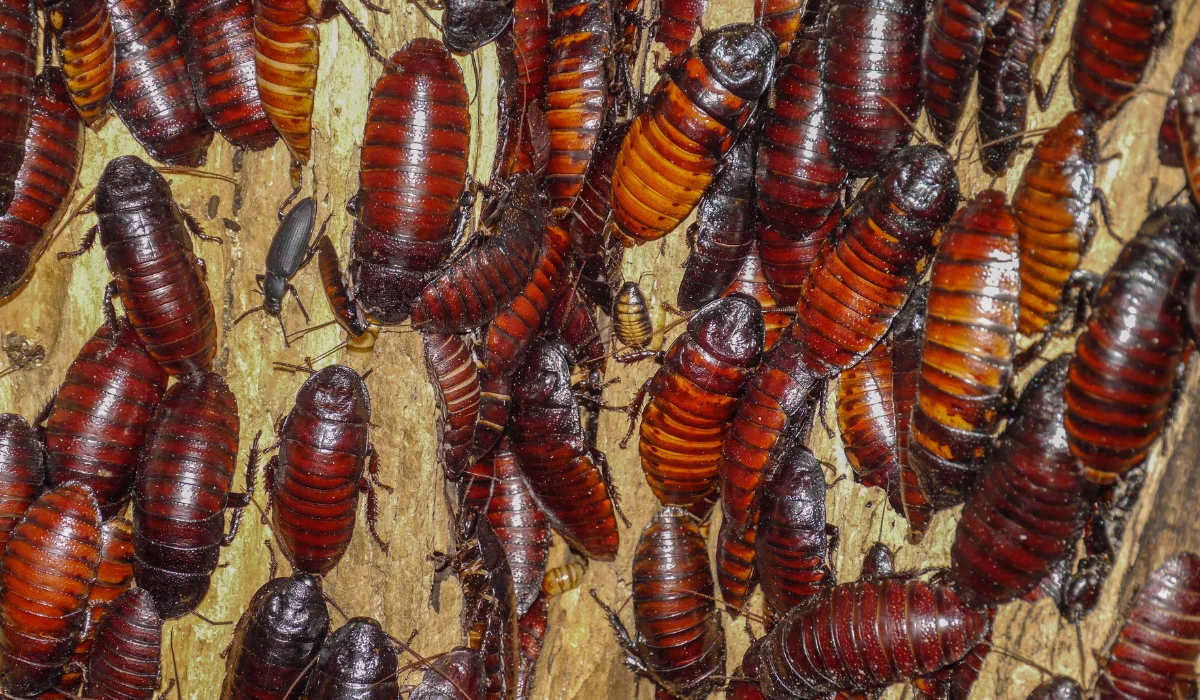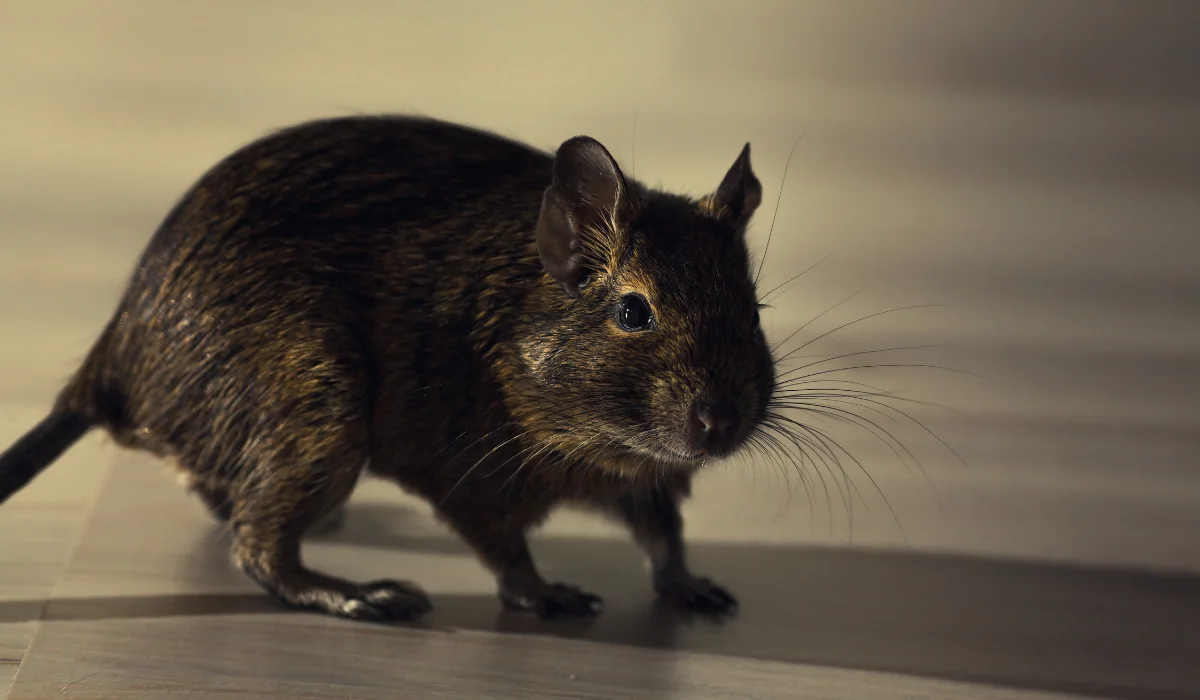Believe it or not, Halloween is here again. As the spooky holiday swings around, many of us will transform our homes into graveyards and haunted mansions.
While you probably expect your cobwebs and jack-o-lanterns to invite trick-or-treaters, you might be surprised when your decorations invite something far, far more sinister…
Pests.
Keep your home pest-free this Halloween by choosing the best pest control service in Marrero, LA, where safety and satisfaction come first.
So before you decorate your space, take a look at which Halloween staples attract pests—and what you can do to keep them from crashing the party.
Hanging Lights
Hanging lights, especially those with a white or blue glow, can attract insects. Research suggests that insects like moths and flies are drawn to artificial lights because these lights disrupt their natural navigation system.
This can cause insects to circle and gather around the light source, resulting in a buildup of insects near your decorations.
Elisabeth Bazanac, a LaJaunie’s pest control specialist with over 6 years of industry experience, says the answer to your bug-woes could be as simple as using yellow or warm LED lights.
“These are less attractive to flying insects than bright white or blue-tinted lights,” Bazanac says.
She also encourages decorators to place lights away from entry points, and keep outdoor lights further away from doors and windows to reduce the chance of insects wandering inside.
Jack-o-Lanterns
While jack-o-lanterns are a classic Halloween decoration, they can become a magnet for pests. The scent and moisture from carved pumpkins attract insects like ants, flies, and beetles.
As the pumpkin starts to rot, it emits odors that lure pests in. Rodents, such as mice and squirrels, are also drawn to the sweet smell of pumpkin, often looking for an easy snack.
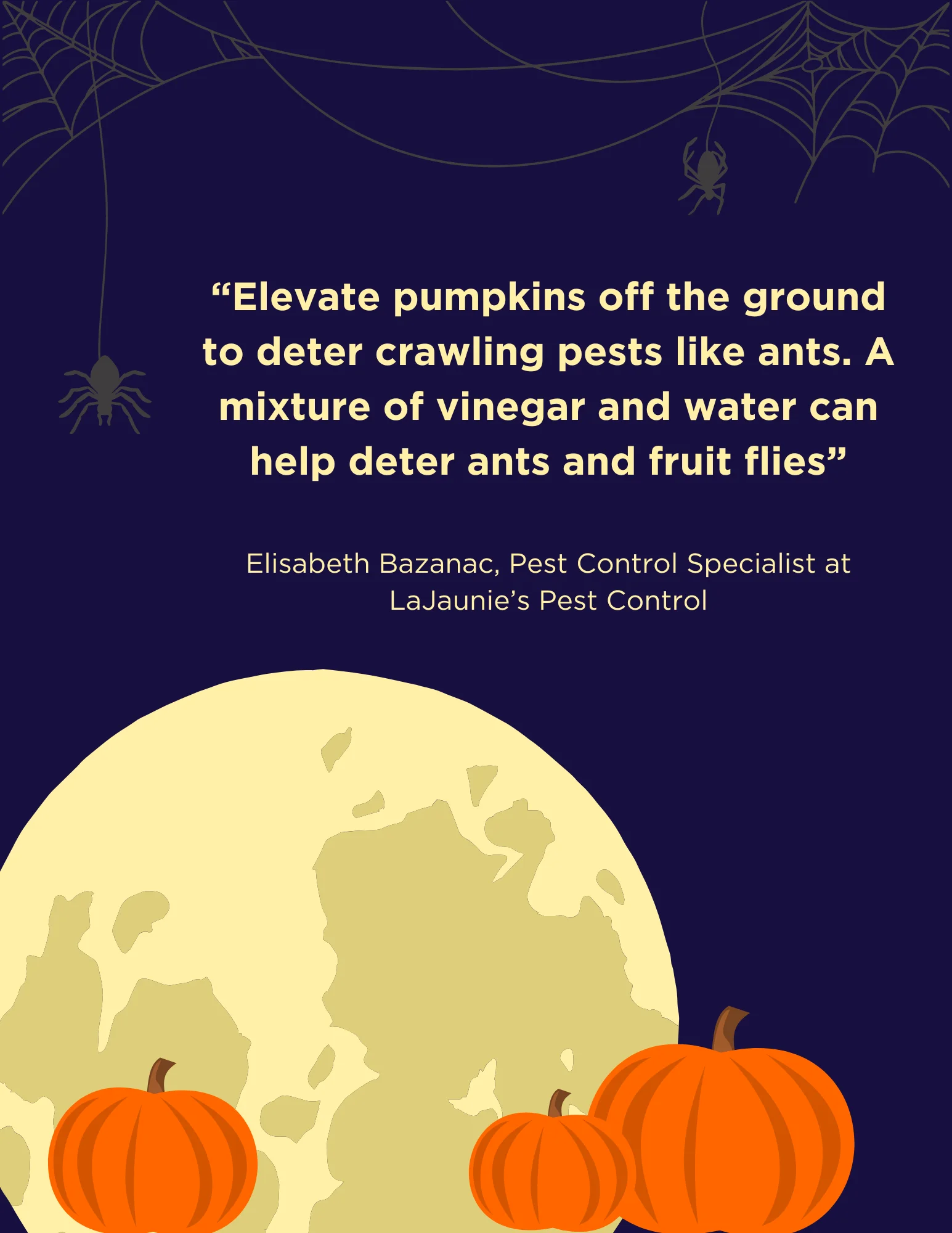
When it comes to this fun, pumpkin-y craft, Bazanac suggests elevating the pumpkins off the ground to deter crawling pests like ants. You can also try spraying your jack-o-lanterns with a vinegar solution.
“A mixture of vinegar and water can help deter ants and fruit flies without damaging the pumpkin.”
Fake Webs
Fake webs are great for creating a spooky atmosphere, but ironically, a fake spider web can attract real insects. These webs mimic the texture and appearance of real spider webs, drawing in insects looking for shelter or a place to lay eggs.
Flies, wasps, and other small pests might get caught, which in turn attracts spiders hoping to claim the area as their own.
Last year, one Reddit user posted a PSA warning users to be careful when it comes to hanging fake webs. Flies, planthoppers, honey bees, moths, and other insects were all getting trapped in their web.
Left unchecked, this can quickly lead to an increase in unwanted pests around your decorations.
When it comes to fake webs, Bazanac recommends placing webs away from trees and shrubs. This reduces the chance of small birds or insects getting trapped in them.
She also suggests that you keep webs high off the ground. “Placing them higher up will deter ground insects and other animals from getting caught.”
Candy
No tricks here! Candy is an essential part of Halloween but it’s also a sweet treat for pests. The sugary smell and bright colors can attract various insects, including cockroaches and rodents. Eek!
Ants have a strong sense of smell and can detect sugar from far away. Wasps and fruit flies are also drawn to sweets, and rodents like mice and rats will quickly take advantage of any leftover candy.
With this in mind, Bazanac encourages all trick-or-treaters to store candy in airtight containers. This prevents scents from attracting ants, rodents, and other pests.
Bazanac also suggests disposing candy wrappers properly. “Ensure that wrappers are thrown away in sealed trash bags to reduce odors that may attract rodents and insects, and avoid leaving candy out overnight.”
You know what they say, when you don’t throw wrappers away, the pests come out to play.
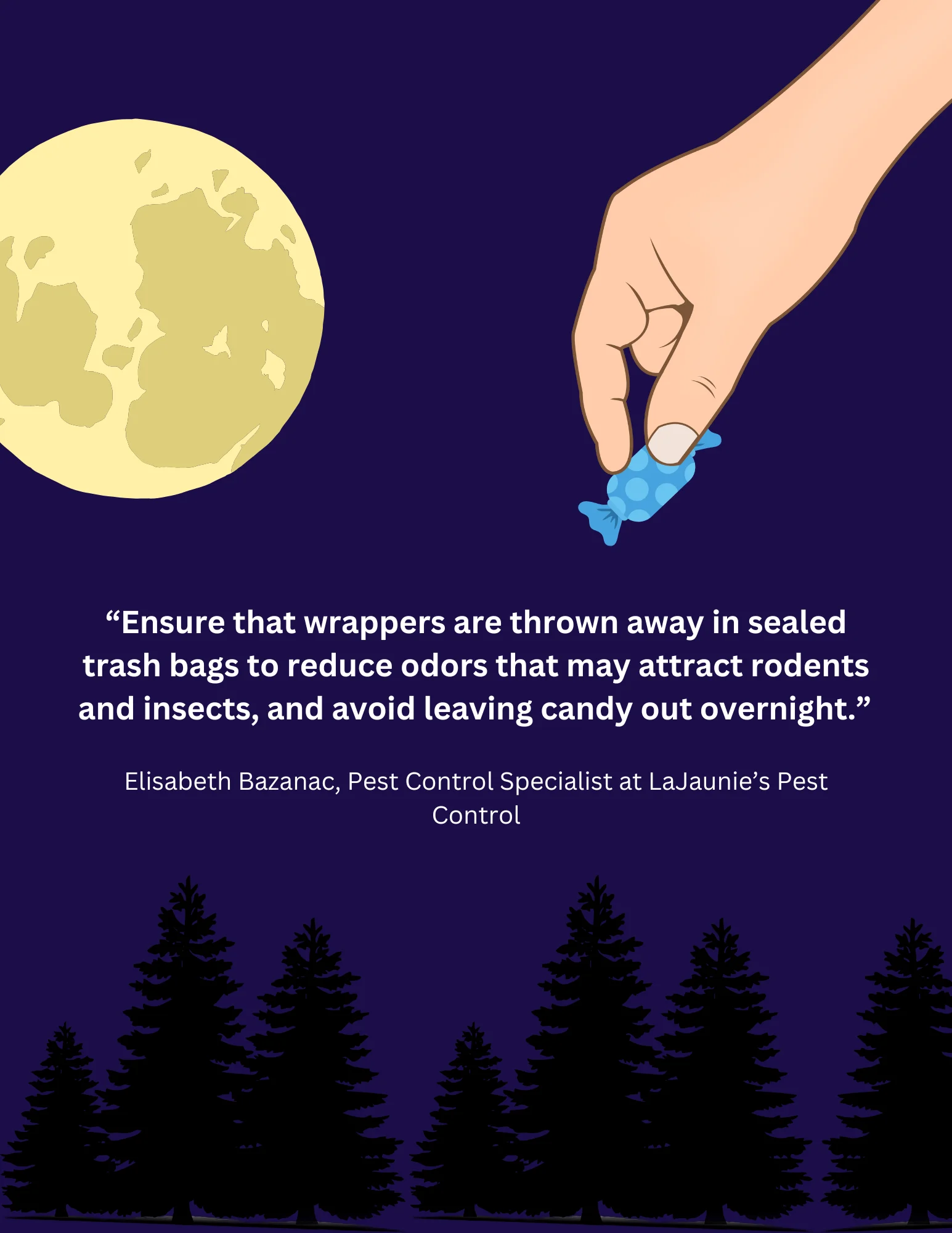
Hay Bales
Hay bales add a rustic touch to your Halloween display but can also entice pests. Hay’s dry, fibrous nature creates a cozy yet hidden spot for rodents, insects, and small animals. Hay can also hold moisture, creating a damp environment that attracts pests.
Spiders, beetles, and grain mites are commonly found in hay. And rodents like mice and rats are also drawn to hay bales, seeking shelter and any potential food sources nearby, such as seeds or grains.
Bazanac suggests elevating hay bales on pallets or elsewhere above ground to discourage rodents from nesting.
“Use natural rodent repellents, such as peppermint oil or cedar shavings, to keep rodents away.” She also recommends checking hay regularly to inspect for any signs of rats or mice.
Do Pests Keep Haunting You?
As we’ve uncovered, your festive Halloween decorations might be unwittingly rolling out the welcome mat for pests.
From jack-o’-lanterns to cobwebs, being mindful of how and where you decorate can save you from some spooky, crawly surprises.
If you’re facing persistent pests or want to prevent an infestation before it starts, consider reaching out to a professional pest exterminators.
Do Pests Keep Haunting You?
Halloween decorations can unintentionally invite pests to your home, turning festive fun into a battle against unwanted guests. From sugared treats attracting rodents to moist pumpkins luring insects, being proactive about pest prevention is key.
Do you want to ensure your Halloween remains spooky only in spirit? Our professional pest control services can provide effective solutions tailored for holiday-related pest challenges.
For expert pest management assistance in keeping your Marrero, LA home pest-free during Halloween and beyond, get your free quote and contact us today to let our specialists help you enjoy a safer, pest-free celebration.
 By: LaJaunie's Pest Control
By: LaJaunie's Pest Control 